
Journal of Structural Integrity and Maintenance
Scope & Guideline
Fostering Excellence in Civil Engineering and Materials Science
Introduction
Aims and Scopes
- Structural Health Monitoring and Assessment:
The journal publishes research that explores various methodologies for monitoring the health of structures, including non-destructive testing, vibration analysis, and damage identification techniques. - Material Performance and Innovations:
Papers often investigate the performance of innovative materials, such as fiber-reinforced composites and recycled aggregates, and their application in enhancing structural integrity. - Predictive Modeling and Simulation:
There is a strong emphasis on the development of predictive models using advanced computational techniques, including machine learning and finite element analysis, to forecast structural behavior. - Seismic and Environmental Resilience:
Research frequently addresses the resilience of structures to seismic events and environmental factors, focusing on design methodologies and retrofitting strategies. - Sustainable Construction Practices:
The journal encourages studies that examine sustainable building materials and construction practices, promoting the use of recycled and eco-friendly materials in structural applications.
Trending and Emerging
- Integration of Artificial Intelligence and Machine Learning:
Recent papers increasingly utilize AI and machine learning for predictive modeling and structural health assessments, showcasing the potential for these technologies to enhance decision-making in structural maintenance. - Advanced Material Applications:
There is a growing trend towards the exploration of advanced materials, such as engineered cementitious composites and sustainable alternatives, which contribute to improved structural performance and durability. - Dynamic and Real-Time Monitoring:
Emerging research focuses on real-time monitoring techniques and dynamic response analysis, providing insights into structural behavior under varying conditions, particularly for critical infrastructure. - Resilience to Climate Change:
Research addressing the resilience of structures to climate change impacts, including extreme weather events, is gaining traction, reflecting a broader awareness of environmental challenges in structural engineering. - Lifecycle Assessment and Sustainability:
An increasing number of studies emphasize lifecycle assessments of materials and structures, promoting sustainable practices and materials in construction, which aligns with global sustainability goals.
Declining or Waning
- Traditional Material Studies:
Research focusing solely on traditional materials like plain concrete or unreinforced masonry has decreased, likely due to the growing interest in advanced composites and sustainable materials. - Basic Structural Analysis Techniques:
There has been a noticeable decline in papers that solely address basic structural analysis methods without integration of modern computational tools or advanced materials. - Static Load Testing:
The frequency of studies centered on static load testing methods has waned as more sophisticated dynamic testing and monitoring techniques gain prominence. - Conventional Construction Methods:
Research focused on conventional construction techniques without consideration for sustainability or innovation has become less prevalent, as the field progresses towards more resilient and efficient practices.
Similar Journals

STRUCTURAL ENGINEERING AND MECHANICS
Advancing the Frontiers of Structural InnovationSTRUCTURAL ENGINEERING AND MECHANICS, a leading journal published by TECHNO-PRESS, stands at the forefront of research in the disciplines of civil, structural, and mechanical engineering. With an ISSN of 1225-4568 and an E-ISSN of 1598-6217, this South Korea-based journal has been a significant contributor to the academic community since its inception in 1994, and it continues to disseminate vital research through 2024 and beyond. Achieving a Q3 ranking in key categories such as Building and Construction, Civil and Structural Engineering, Mechanical Engineering, and Mechanics of Materials, the journal is recognized for its high standard of academic rigour and relevance in contemporary engineering challenges. Although not Open Access, it offers robust access options for institutions and professionals seeking to advance their understanding of structural systems and mechanics. Researchers, students, and practitioners in these fields will find invaluable insights and innovative studies that push the boundaries of knowledge, making this journal an essential resource for anyone invested in engineering advancements.
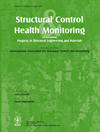
Structural Control & Health Monitoring
Transforming Challenges into Solutions in Structural EngineeringStructural Control & Health Monitoring, published by John Wiley & Sons Ltd, is a premier academic journal dedicated to advancing the fields of structural engineering, building and construction, and mechanics of materials. With a commendable Q1 status in three key categories and a strong presence in the scientific community, this journal boasts an impressive ranking of #20 in Building and Construction and #35 in Civil and Structural Engineering, reflecting its significant impact and relevance. Since transitioning to Open Access in 2023, the journal provides unrestricted access to innovative research, promoting a wider dissemination of crucial findings and methodologies. It specializes in the dissemination of advancements in health monitoring techniques, structural integrity evaluation, and control systems, aimed at researchers, professionals, and students seeking to enhance their understanding of contemporary challenges in structural management. With converged years spanning from 2004 to 2024, Structural Control & Health Monitoring remains committed to fostering a collaborative environment where cutting-edge research meets practical applications, positioning itself as an essential resource for those at the forefront of the engineering discipline.

Structural Monitoring and Maintenance, An International Journal
Transforming insights into structural monitoring excellence.Structural Monitoring and Maintenance, An International Journal is a prestigious publication dedicated to advancing knowledge in the fields of civil and structural engineering, as well as safety, risk, reliability, and quality assessment. Published by TECHNO-PRESS in South Korea, this journal serves as a vital platform for researchers, professionals, and students interested in the latest methodologies, technologies, and case studies pertaining to structural monitoring, assessment, and maintenance practices. With its current Q3 category ranking in both structural engineering and safety metrics, the journal aims to promote high-quality research that addresses real-world challenges in structural integrity and safety. As the journal converges its scope from 2014 to 2024, it continues to welcome innovative studies that contribute to the development of sustainable and resilient infrastructures worldwide. Despite the absence of an open-access option, the substantial readership is ensured through its indexed positions, currently ranked among the top journals in its field according to Scopus metrics. Engage with groundbreaking research that shapes the future of structural engineering and safety practices by delving into the contributions this journal offers.
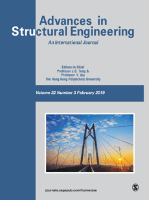
ADVANCES IN STRUCTURAL ENGINEERING
Unveiling Breakthroughs in Structural EngineeringADVANCES IN STRUCTURAL ENGINEERING, published by SAGE PUBLICATIONS INC, is a leading journal dedicated to the advancement of knowledge in the fields of Building and Construction, as well as Civil and Structural Engineering. With a solid impact factor and a commendable Scopus ranking (Rank #60 in Building and Construction, Rank #105 in Civil and Structural Engineering), this journal stands at the forefront of academic research, providing a platform for high-quality articles that contribute significantly to the discipline. Covering a range of topics from innovative construction techniques to sustainable engineering practices, the journal aims to foster collaborative dialogue among researchers, industry professionals, and students alike. As of 2023, it boasts impressive category quartiles, ranking Q1 in Building and Construction and Q2 in Civil and Structural Engineering. ADVANCES IN STRUCTURAL ENGINEERING is a vital resource for those looking to stay abreast of emerging trends and groundbreaking developments in structural engineering, promoting an environment of continuous learning and application of best practices. With a convergence of research from 1999 to 2024, the journal not only emphasizes theoretical frameworks but also bridges the gap between academia and practical application in engineering projects.
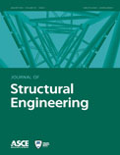
JOURNAL OF STRUCTURAL ENGINEERING
Elevating Standards in Structural EngineeringThe JOURNAL OF STRUCTURAL ENGINEERING, published by the ASCE-AMERICAN SOCIETY OF CIVIL ENGINEERS, is a premier academic journal that focuses on the latest advancements in the field of structural engineering. With a rich history dating back to 1955, this journal has become a crucial platform for disseminating peer-reviewed research that addresses critical issues and innovative solutions in building and construction, civil and structural engineering, materials science, and mechanics. It proudly holds a Q1 quartile ranking across multiple categories in the 2023 Scopus rankings, indicating its influential presence in the academic community. The journal does not currently offer open access options, ensuring that the content is rigorously vetted for quality and relevance, thus appealing to researchers, industry professionals, and students seeking credible, impactful research. With contributions from leading experts, the JOURNAL OF STRUCTURAL ENGINEERING is essential reading for anyone interested in advancing their understanding and practice within this vital area of engineering.
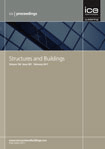
PROCEEDINGS OF THE INSTITUTION OF CIVIL ENGINEERS-STRUCTURES AND BUILDINGS
Advancing the Future of Civil EngineeringPROCEEDINGS OF THE INSTITUTION OF CIVIL ENGINEERS-STRUCTURES AND BUILDINGS, published by Emerald Group Publishing Ltd, is a leading journal in the fields of Building and Construction and Civil and Structural Engineering. Since its inception in 1992, this journal has served as a vital platform for disseminating high-quality research and innovative practices within the industry, contributing to the advancement of engineering knowledge and its applications. With an impact factor reflective of its significant presence in the field, this publication ranks in the Q3 category, reinforcing its role as an essential resource for researchers and professionals alike, positioning it among the top journals in its category. As of 2023, it holds notable Scopus rankings, emphasizing its credibility and influence within both Building and Construction (Rank #88/223) and Civil and Structural Engineering (Rank #171/379). Researchers aiming to enhance their understanding of cutting-edge developments in civil engineering will find this journal indispensable in accessing a wealth of knowledge, methodologies, and case studies that shape the infrastructures of tomorrow.
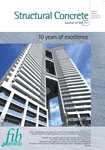
Structural Concrete
Transforming Construction Practices Through ResearchStructural Concrete, published by ERNST & SOHN, is a premier journal dedicated to the field of Civil and Structural Engineering, focusing on innovative research and advancements in concrete materials and technologies. With an impressive impact factor and a consistent ranking in the Q1 category of both Building and Construction and Civil and Structural Engineering, the journal stands as a vital resource for researchers, professionals, and students alike. It is indexed with notable Scopus ranks, underscoring its significance within the academic community. The journal spans a comprehensive scope (from 2001 to the present) that encompasses diverse topics related to the behavior, design, and application of structural concrete. Although not an open access publication, it offers valuable insights and cutting-edge knowledge that contribute to the ongoing evolution of construction practices and materials science. Structural Concrete is an essential platform for sharing pioneering findings and fostering collaboration within this dynamic field.

International Journal of Concrete Structures and Materials
Unlocking Solutions for Tomorrow's Engineering ChallengesThe International Journal of Concrete Structures and Materials, published by SPRINGER, is a premier open-access journal dedicated to the field of civil and structural engineering, with a strong emphasis on concrete materials and their diverse applications. With an ISSN of 1976-0485 and E-ISSN of 2234-1315, this journal has established itself as a crucial resource since its inception in 2012, addressing pressing challenges in structural integrity and durability. With a remarkable impact factor and ranking in the Q1 category for both Civil and Structural Engineering and Ocean Engineering, this journal has garnered recognition and respect, ranking #18 out of 105 in Ocean Engineering and #81 out of 379 in Civil and Structural Engineering as per Scopus metrics. The journal’s open-access policy enhances the dissemination of knowledge, making cutting-edge research readily available to a global audience. Aimed at researchers, practitioners, and students alike, the International Journal of Concrete Structures and Materials strives to promote advancements in concrete technology and foster innovative solutions for contemporary engineering problems.
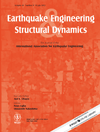
EARTHQUAKE ENGINEERING & STRUCTURAL DYNAMICS
Innovating for a seismic-ready future.EARTHQUAKE ENGINEERING & STRUCTURAL DYNAMICS, published by Wiley, is a leading journal recognized for its significant contributions to the domains of civil and structural engineering, as well as geotechnical engineering and engineering geology. With an impressive Q1 ranking in multiple categories, including Civil and Structural Engineering, and an esteemed Scopus ranking placing it in the 82nd percentile, the journal serves as a premier platform for disseminating pioneering research and innovative methodologies related to earthquake engineering and dynamic structural analysis. Established in 1972, this journal boasts a comprehensive coverage of topics from theoretical developments to practical applications, making it an essential resource for researchers, industry professionals, and students eager to expand their understanding of seismic safety and structural resilience. Though it does not offer open access, the journal continues to be a cornerstone for scholarly communication within the earthquake engineering community, advancing knowledge that shapes better engineering practices worldwide.
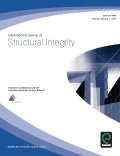
International Journal of Structural Integrity
Connecting Academia and Industry through Structural Integrity ResearchInternational Journal of Structural Integrity is a premier peer-reviewed academic journal published by EMERALD GROUP PUBLISHING LTD in the United Kingdom. As a valuable resource in the fields of Civil and Structural Engineering, Mechanical Engineering, and Mechanics of Materials, this journal serves to advance knowledge and foster innovation in these critical areas of study. With an impressive impact factor reflected in its 2023 category quartiles, ranking Q2 across multiple engineering disciplines, the journal is recognized for its contributions to research and practical application. Researchers can benefit from its rigorous publishing standards that encompass a wide array of interdisciplinary topics pertaining to structural integrity. Accessing the journal is facilitated for those seeking high-quality research and findings, vital to both academia and industry. Since its inception in 2010 and extending until 2024, the journal continues to attract scholarly articles that push the boundaries of engineering knowledge, making it an essential platform for professionals, students, and researchers seeking to stay at the forefront of structural engineering."